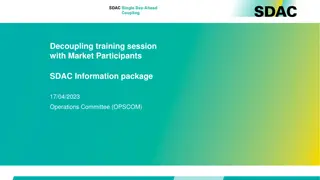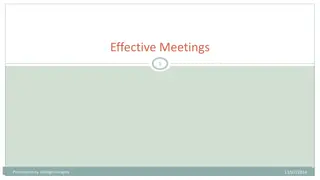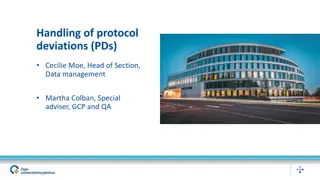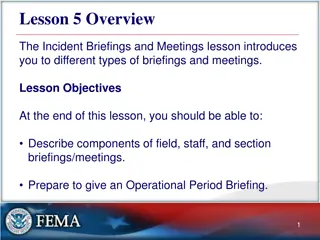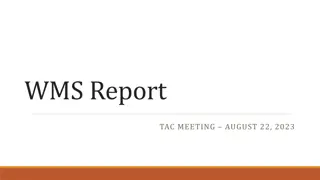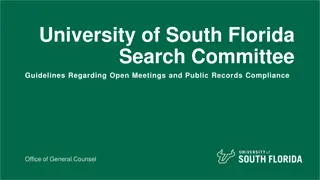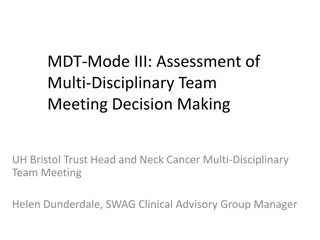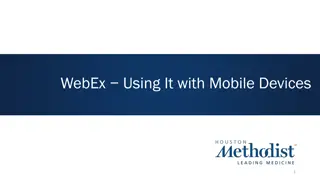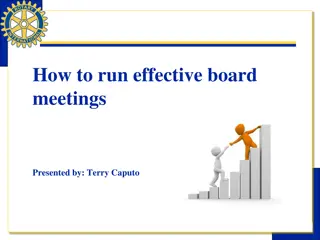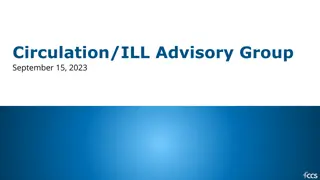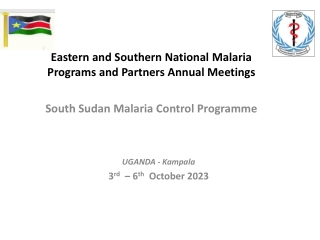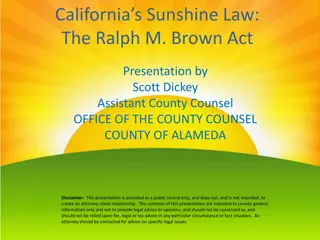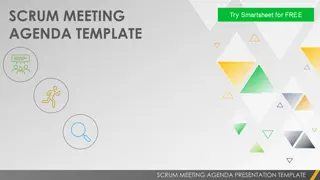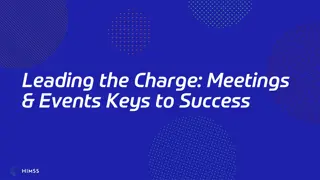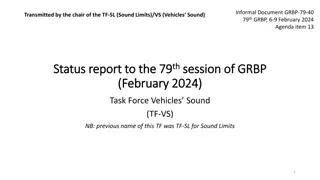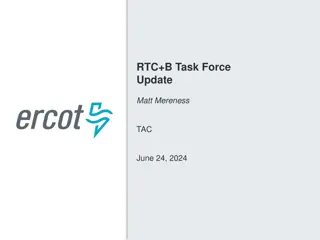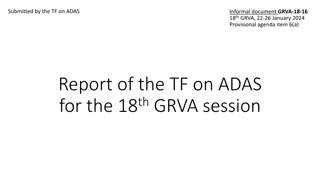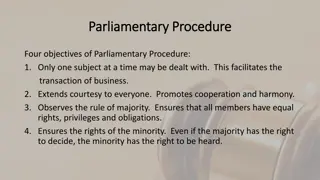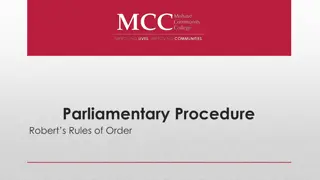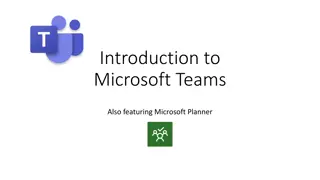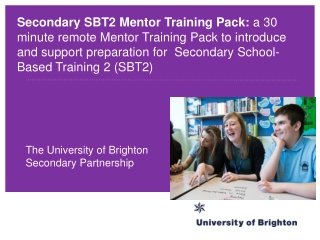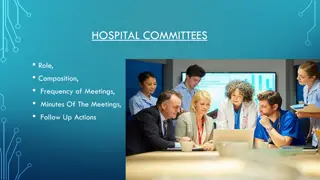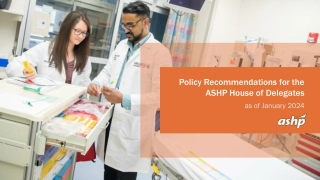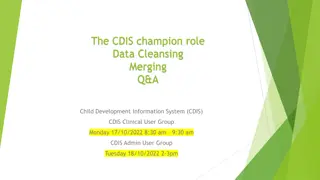The Role of SDAC in DMC Meetings
SDAC (Statistics and Data Analysis Center) plays a crucial role in DMC (Data Monitoring Committee) meetings by preparing and presenting safety and efficacy reports for review. The SDAC statistician collaborates with the trial statistician, produces reports, presents closed reports, and provides additional analyses as necessary. Communication channels must be clear and confidential to maintain trial integrity. The typical communication flow involves various stakeholders in the reporting process. The meeting structure includes introductory closed sessions, open sessions, closed sessions, and debriefing sessions.
Download Presentation

Please find below an Image/Link to download the presentation.
The content on the website is provided AS IS for your information and personal use only. It may not be sold, licensed, or shared on other websites without obtaining consent from the author. Download presentation by click this link. If you encounter any issues during the download, it is possible that the publisher has removed the file from their server.
E N D
Presentation Transcript
The role of the SDAC in DMC meetings Matt Downs
SDAC? Statistics and Data Analysis Center Also known as: oIndependent Statistical Reporting Group (ISRG) oIndependent Data Coordinating Center (IDCC) oData Reporting Group (DRG) oReporting Statistician Group that prepares and presents the safety and efficacy reports reviewed by the DMC at is meetings 2
SDAC Statistician AKA reporting statistician or independent statistician Not part of sponsor/study management team Collaborates with trial statistician on design of DMC reports Produces Open and Closed Reports Presents Closed Report, including formal interim analyses Provides additional analyses as needed Unblinded to by-treatment results Does NOT make recommendations; is NOT a voting member of the DMC 3
Outline 1. Confidentiality & communication channels 2. DMC reporting process 3. Report structure and organization 4. At the meeting 4
Confidentiality Interim data & DMC discussions must remain confidential Leaks can affect trial integrity o Recruitment o Adherence o Outcome assessment Therefore, communication channels should be clear & simple 6
Typical communication flow Unmasked Masked Randomization provider Data providers Study data Treatment codes Open report Sponsor Study Team SDAC Request for analyses Open report Accepted recommendations Requested additional analyses Open and closed reports & IDMC-requested analyses Recommendations Sponsor IDMC Data Review Board Decision re recommendations 7
Meeting structure (Introductory closed session) Open session Closed session (Executive session without SDAC) (Debriefing session) () = denotes less common elements 8
Meeting structure Open session o Sponsor, Steering Committee, DMC, SDAC o Study team provides update on: Trial status & recruitment Adjudication metrics Blinded observations on important safety findings However, experienced DMCs may be impatient with an extensive open-session data presentation; prefer to spend time on closed-session data o No discussion by treatment arm Closed session o Unblinded review of DMC report with DMC and SDAC o Draft of recommendation on future trial conduct 9
Meeting structure A closed session may precede the open session oOpportunity for DMC to form questions to pose to Sponsor in open session Sometimes a debriefing session concludes the meeting where DMC: oAsks questions of sponsors; OR oShares its recommendations; OR oBoth 10
Caution People can slip, especially on the phone during open session Less experienced DMC members forget that they cannot disclose information DMC members may open and refer to closed report during open session SDAC staff should o Remind attendees at start of open session of ground rules o Remain vigilant during open session Sponsors should not ask probing questions of DMC (e.g., when would you like to meet next?) Some sponsors have SOPs that allow them to attend open sessions only by phone 11
Conveying DMC recommendations Who receives recommendation? o Sponsor executive or data review board o Steering Committee Chair Generally not a member of the study team o Why not? o Recipient serves as a firewall in case sponsor does not accept DMC recommendation outright This means that debriefing or open session following DMC deliberations may be ill-advised o At the very least, discussions in debriefing sessions need to be particularly guarded o Must be clear in advance if recommendations are to be shared during debriefing session 12
Conveying DMC recommendations Timing of recommendations o Varies greatly between DMC charters o SDACoften facilitates process o Good model: conveyed verbally following meeting, with formal written recs following within 5 days o Recommendations may take extended time to reach study team Sometimes two versions prepared o Abbreviated set for distribution to IRBs by sponsor o More complete set that may contain guidance or requests from the DMC 13
Conveying DMC recommendations All meetings generally have corresponding recommendations o Possible exception are unscheduled (i.e., unplanned) DMC reviews Recommendations generally do not include unblinded data o Can be provided upon request following review of the recommendations Sponsor should communicate acceptance of recs to DMC via SDAC 14
Open reports Open (a.k.a. sponsor) report = report that presents only total counts and statistics pooled over treatment group Purpose o To inform study team about recruitment etc. o To provide a common document for discussing issues during meeting s open session o To check accuracy of SDAC s reporting Dangers o Potential to unmask recipients o Compete with more important activities leading up to meeting o May no longer reflect what DMC is seeing in closed report Requires two versions of programs one for sponsor and one for IDMC 16
Open reports Important to preserve the blind o analyses should be presented by aggregating information across treatment groups and, usually, avoiding subject-level data (e.g., listings, etc.) o Often send open report to Sponsor one day later than closed report Different Sponsors request different amounts of data o Only accrual, status and baseline data o Plus limited follow-up data (e.g. AEs) o Or, include all or most of the closed session analysis, in aggregate form o Good to make clear to DMC what degree of access Sponsor will have at organizational meeting If DMC requests specific analyses based on concern raised in closed session, don t include in Open Report 17
Materials for each DMC safety review Protocol summary Closed report Copies of past meeting minutes Charter Informed consent form Supplemental materials (electronic only) Open report (electronic only) Protocol, SAP, IB (electronic only) 18
Common closed report content 1. 2. 3. 4. 5. 6. 7. Executive overview Data sources and currentness Screening & randomization rates Baseline comparability Subject disposition Major protocol violations Treatment exposure 19
Common closed report content 8. Safety o o o o ECGs/echocardiograms o Antidrug antibodies Efficacy 10. Supplemental listings & presentations AEs Laboratory parameters Vital signs 9. 20
Closed reports often arent static Reports evolve over time o Entire battery of tables & figures may not make sense for early reports if accrual is slow Report template presented at org meeting Changes because of DMC requests o Now that tables are populated, changes requested o Safety signal requires further exploration o Results from related compounds prompt exploration o DMC is contemplating recommendation to stop trial Subgroup analyses Sensitivity analyses on primary endpoint Conditional power calculations o Intellectual curiosity of DMC members (not a good reason for changes) Because not all changes can be anticipated, best to get all available data as part of transfers 21
Silent access to data Needed to support ad hoc DMC meetings between normally scheduled meetings o Monthly transfers of data o On demand access What data are sent? o SDTM or CRF data? o ADaM datasets? Often not ready in time for SDAC to use SDAC may have less understanding of the data since they did not program it o Hybrid approach SDTM/CRF for most domains ADaM for complicated efficacy analysis (e.g., PFS where you want to ensure alignment between conventions for IA and final analysis) 22
Typical report timeline 3-4 weeks before meeting o Transfer of IxRS and CRF/SDTM data o Sponsor approaches Include only data through a data cut-off date 4-8 weeks before transfer Often done for interim analyses to allow greater time to clean data Potentially dirty data after data cut-off not sent Take a snapshot of the current database, warts and all This is often preferred by DMCs o Other non-CRF data also transferred Central laboratory Adjudicated events Protocol violations Supplemental pharmacovigilance data 1 week before meeting o Distribute closed report to DMC members o Distribute open report to sponsor/Steering Committee Chair one day later 23
The reports delivery = No! 24
The reports delivery = Also not great (entire report was 1,800 pages) 25
The reports delivery Electronic delivery is (more and more) common o DMC member retrieves from access-restricted file sharing site o Shortens time between report preparation and DMC availability Hardcopy also an option o Requires better report hygiene than electronic report Organization of content Having to print 1,800 pages makes you think how you can shorten the report while still having it be comprehensive Encourages consideration of more efficient presentations Graphics instead of 200-page tables in Courier Traffic lighting output Subdividing content between main report and appendix o Review during the meeting itself is also more efficient 26
Closed Report Content: Tips for a more readable report
Treatment group labels SDAC and DMC should be aware of the identity of treatment group labels oi.e., Group A = control; Group B = experimental oMaintained across report cycles Nonetheless, report uses semi-masked labels oPreserves masking if report seen outside of DMC 28
Data currentness Tension in IDMC reporting between accuracy and timeliness Blank portion of bar represents data that are in the field but not in IDMC s report 29
Data currentness AEs that occurred before last report s data extraction date, but had not yet been reported in the last report s database For events that had not yet been reported, when had they occurred 30
False precision adds noise Death by a thousand decimal points Group A Group B Group A Group B 31
Better Group A Group B Group A Group B 32
Even better Group A Group A Group B Group B 33
Recap the last report IDMC doesn t need to take time rehashing points that it has already noted and discussed and that haven t changed Executive summaries can be helpful here As can copies of previous meeting minutes 34
Exec summary 35
Forest, to tree, to leaf (and maybe to chlorophyll) For especially dense sections (i.e., AEs), begin with overview of data and then drill to details Helps navigate multi-page tables and figures that follow 37
Dotplot B worse 38
Volcano plot Diarrhea 45 (20%) in Group A and 78 (35%) in Group B Fisher s exact p = 0.0004 Group B better Group B worse 39
Volcano plot Dotplot AE overview table Table of SAEs Table of Grade 3+ AEs Table of AEs leading to tx discontinuation Etc. By-subject listing SAE narratives 41
Be a lumper, not a splitter MedDRA preferred terms can split related events In next slide, how many participants had a UTI? 42
Traffic light output 45
Traffic light output 46
Code defensively By definition, dirty interim data will have more data quality issues than a clean and locked final database Limiting IDMC safety reporting only to clean data causes unacceptable lag in reporting IDMC programming needs to account for dirty data, warts & all oMeasurements incompatible with life (e.g., height of 150 inches) oNonsensical measurements (e.g., post-tx dosing dates before randomization) 47
Code defensively Not coded defensively Recommend setting obvious errors to missing in presentation 48
Harmonize data sources Frustrated IDMC member: Table 5 shows 10 subjects discontinued from the treatment due to death, but the AE table shows only 9 events with fatal outcomes. Now you tell me 11 subjects have died; you need to get your story straight. Possible explanation: o 2 deaths were not reported as AEs because they were beyond safety reporting period (therefore, 9 fatal AEs and not 11) o One subject who died had already discontinued from treatment for other reasons (e.g., investigator decision), which accounts for why 10 and not 11 d/c treatment due to death Alternative explanation interim data are dirty and various sources of information are not yet fully reconciled 49



